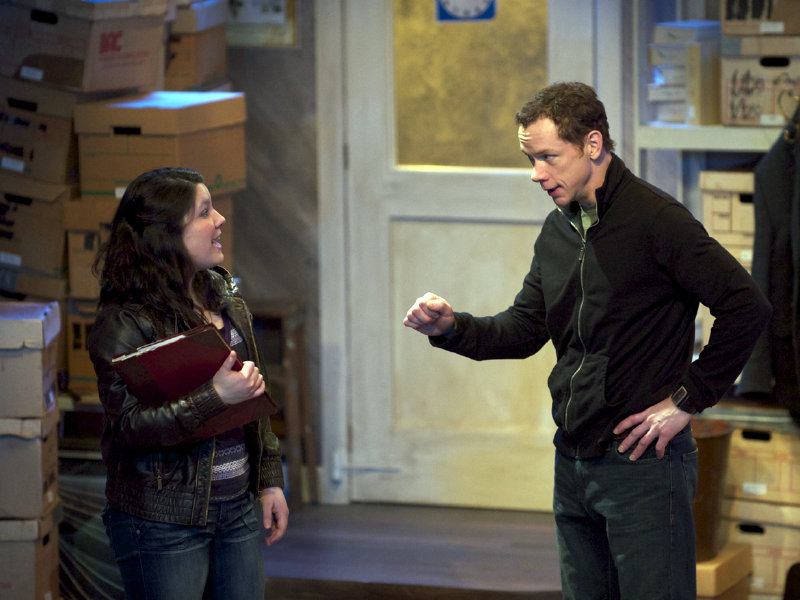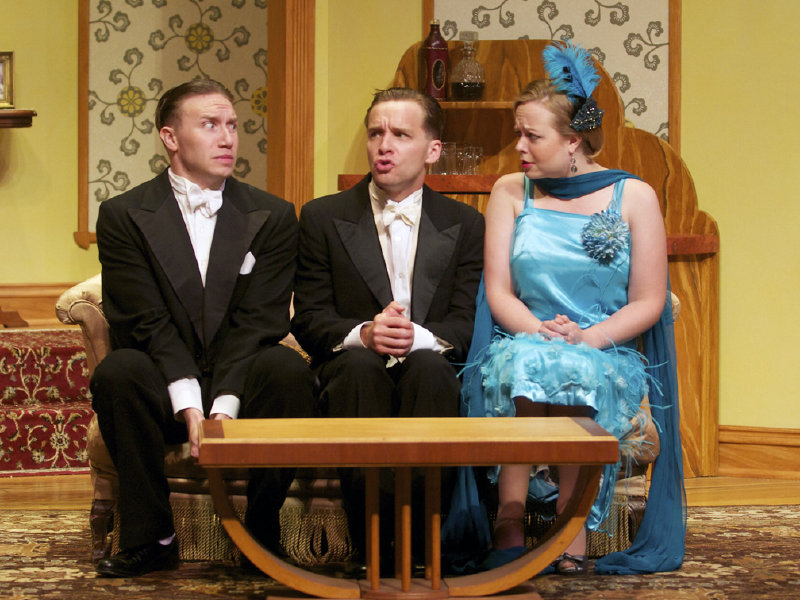Milwaukee Chamber Theatre's "Moonlight & Magnolias" opened this weekend to a full house at the Broadway Theatre Center's Cabot Theater. The play, written by Ron Hutchinson, is set in 1939 at a Hollywood studio in the office of David O. Selznick, of Selznick International Pictures.
Selznick had worked for two years to bring the novel "Gone With the Wind" to the screen, but after just two weeks of filming, he realized the movie was off to a bad start. He shut down the filming process and locked himself in his office with Ben Hecht, a brilliant screenwriter, and Victor Flemming, a top notch director, to rewrite the screenplay. The only food he allowed the group to eat was bananas and peanuts -- supposed "brain food." Hecht agreed to give Selznick five days, so five days of craziness ensues.
So what kind of plot can you have with three guys stuck in a room? The focus is on character development. We indeed got a good look inside each of these guys' heads as their egos clash, heads butt and banana peels fly. It was interesting to witness the creative process that inevitably, at some level, is behind every movie or TV show we watch.
And why do we get the films and shows we do? According to producer Selznick, "We give them what they want, not what they need." I would dare to say that although that is still the major drive in the movie business, that there are certainly a decent share of movies produced these days that attempt to teach and inform the public, as well as to influence social change.
Also interesting was Selznick's insistence to stick with the original storyline and dialogue as it was written in the book. He believes that the people who bought the book, (and hopefully go to see the movie) will want to see the story they read, and that it was his duty to be loyal to the author. Clearly these days, movie scripts take a great deal of liberty with how they portray the novels upon which they are based. It is all a part of creative process of filmmaking.
As exemplified in the play, there are many more people involved in that process than are generally recognized -- and they want to be there, even as frustrating as it may be at times, because they want to be a part of that magic. They desire to be part of something that is bigger than them selves, to be involved in creating humanity's time capsule. "It is only in movies that the dead can walk," says Selznick.
Jessica Laub was born in Milwaukee in the spring of 1970, thereafter spending her childhood days enjoying the summers on the shores of Lake Michigan and winters at the toboggan chute in Brown Deer Park.
Alas, she moved away to broaden her horizons, and studied out East for a few years at Syracuse University. After a semester "abroad" at the University of New Mexico in Albuquerque, she graduated with a B.A. in English and advertising.
After college, she worked at Glacier National Park, a ski hill in Steamboat, Col. and organic farms in Pennsylvania, New Jersey and California.
In 1995, Laub moved to Nicaragua where she worked on community gardens, reforestation and environmental education as a Peace Corps volunteer. While there, she learned to speak Spanish, pay attention to world politics and how to make tortillas.
Laub then returned to Milwaukee to join the ranks of the non-profit sector. Currently, she works at the United Performing Arts Fund (UPAF) and keeps busy by painting, throwing pots, reading, trying to understand her two-year old son, seeing performances and howling at the moon.







